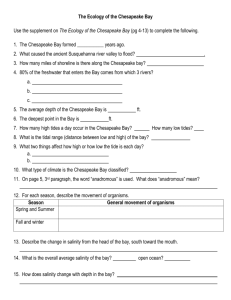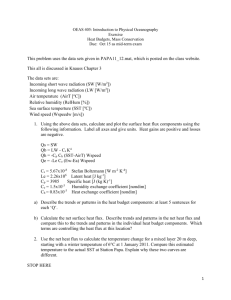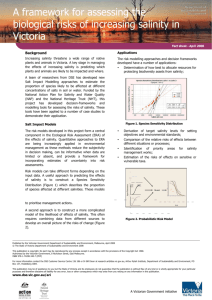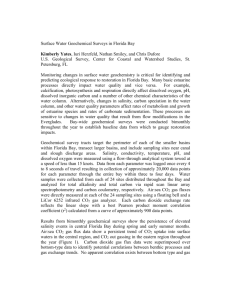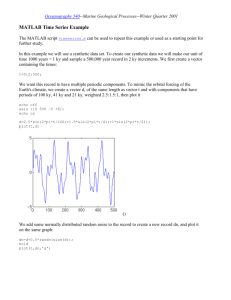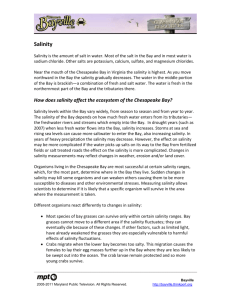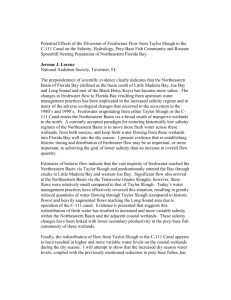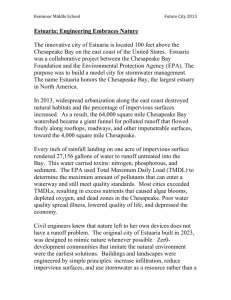HW11: Autocorrelation and Cross-Correlation
advertisement
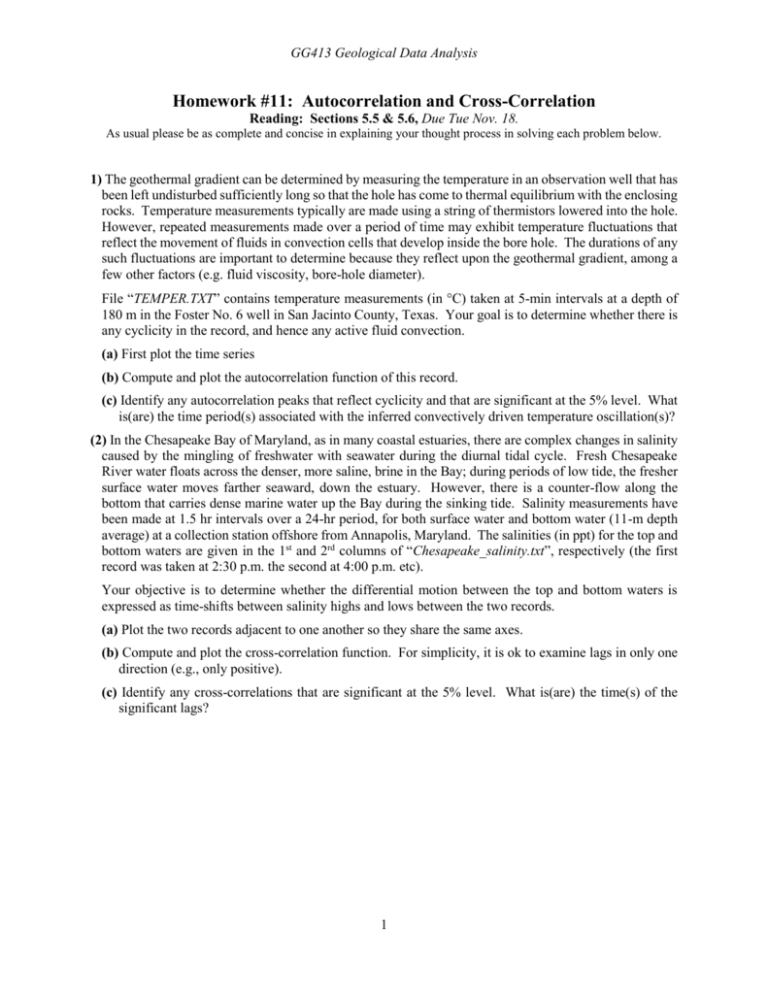
GG413 Geological Data Analysis Homework #11: Autocorrelation and Cross-Correlation Reading: Sections 5.5 & 5.6, Due Tue Nov. 18. As usual please be as complete and concise in explaining your thought process in solving each problem below. 1) The geothermal gradient can be determined by measuring the temperature in an observation well that has been left undisturbed sufficiently long so that the hole has come to thermal equilibrium with the enclosing rocks. Temperature measurements typically are made using a string of thermistors lowered into the hole. However, repeated measurements made over a period of time may exhibit temperature fluctuations that reflect the movement of fluids in convection cells that develop inside the bore hole. The durations of any such fluctuations are important to determine because they reflect upon the geothermal gradient, among a few other factors (e.g. fluid viscosity, bore-hole diameter). File “TEMPER.TXT” contains temperature measurements (in C) taken at 5-min intervals at a depth of 180 m in the Foster No. 6 well in San Jacinto County, Texas. Your goal is to determine whether there is any cyclicity in the record, and hence any active fluid convection. (a) First plot the time series (b) Compute and plot the autocorrelation function of this record. (c) Identify any autocorrelation peaks that reflect cyclicity and that are significant at the 5% level. What is(are) the time period(s) associated with the inferred convectively driven temperature oscillation(s)? (2) In the Chesapeake Bay of Maryland, as in many coastal estuaries, there are complex changes in salinity caused by the mingling of freshwater with seawater during the diurnal tidal cycle. Fresh Chesapeake River water floats across the denser, more saline, brine in the Bay; during periods of low tide, the fresher surface water moves farther seaward, down the estuary. However, there is a counter-flow along the bottom that carries dense marine water up the Bay during the sinking tide. Salinity measurements have been made at 1.5 hr intervals over a 24-hr period, for both surface water and bottom water (11-m depth average) at a collection station offshore from Annapolis, Maryland. The salinities (in ppt) for the top and bottom waters are given in the 1st and 2rd columns of “Chesapeake_salinity.txt”, respectively (the first record was taken at 2:30 p.m. the second at 4:00 p.m. etc). Your objective is to determine whether the differential motion between the top and bottom waters is expressed as time-shifts between salinity highs and lows between the two records. (a) Plot the two records adjacent to one another so they share the same axes. (b) Compute and plot the cross-correlation function. For simplicity, it is ok to examine lags in only one direction (e.g., only positive). (c) Identify any cross-correlations that are significant at the 5% level. What is(are) the time(s) of the significant lags? 1



